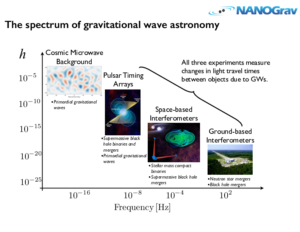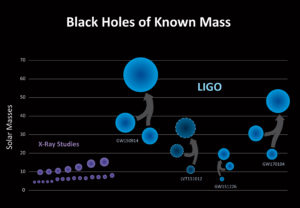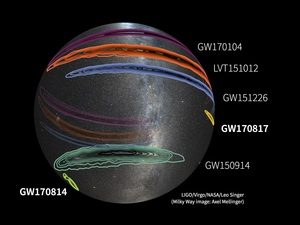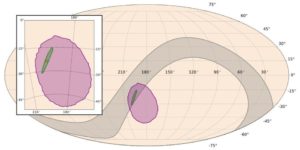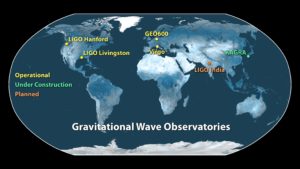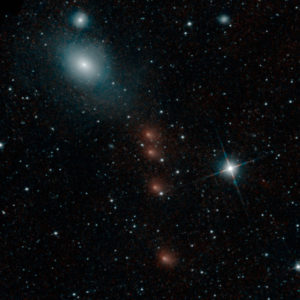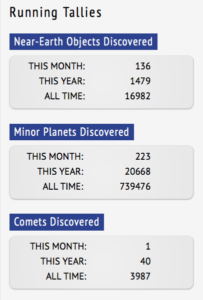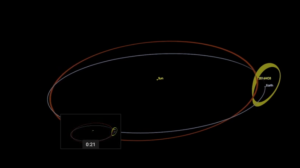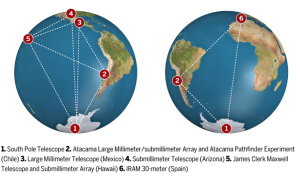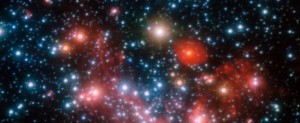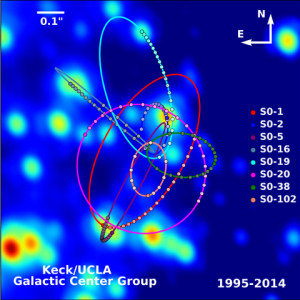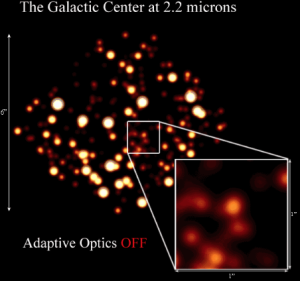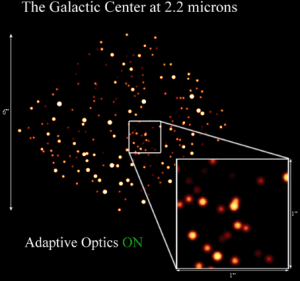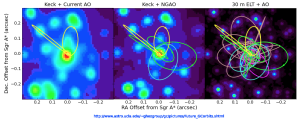Peter Lobner, updated 17 August 2021
1. Introduction
The Event Horizon Telescope (EHT) Collaboration reported a great milestone on 10 April 2019 when they released the first synthetic image showing a luminous ring around the shadow of the M87 black hole.
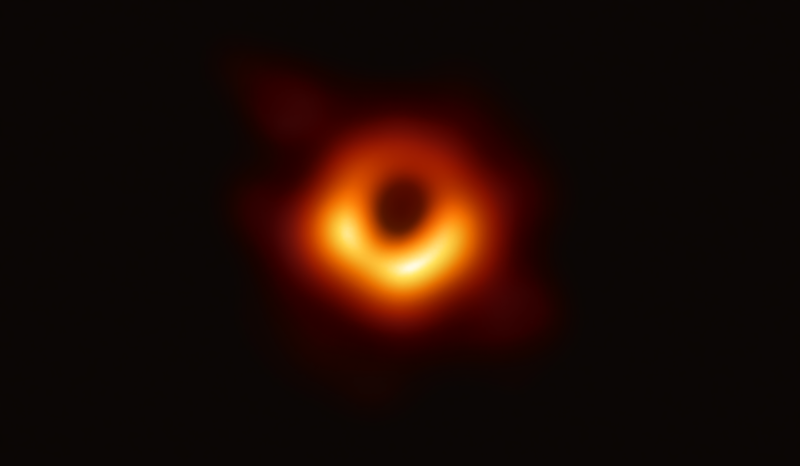
Source: Event Horizon Telescope Collaboration
The bright emission ring surrounding the black hole was estimated to have an angular diameter of about 42 ± 3 μas (microarcseconds), or 1.67 ± 0.08 e-8 degrees, at a distance of 55 million light years from Earth. At the resolution of the EHT’s first black hole image, it was not possible to see much detail of the ring structure.
Significantly improved telescope performance is required to discern more detailed structures and, possibly, time-dependent behavior of spacetime in the vicinity of a black hole. The EHT Collaboration has a plan for improving telescope performance. A challenging new observational goal has been established by scientists who recently postulated the existence of a “photon ring” around a black hole. Let’s take a look at these matters.
2. Improving the performance of the EHT terrestrial observatory network
As I described in my 3 March 2017 post on the EHT, a very long baseline interferometry (VLBI) array with the diameter of the Earth (12,742 km, 1.27e+7 meters) operating in the EHT’s millimeter / submillimeter wavelength band (1.3 mm to 0.6 mm) has a theoretical angular resolution of 25 to 12 μas, with the better resolution at the shorter wavelength.
The EHT team plans to improve telescope performance in the following key areas:
Improve the resolution of the EHT
- Observe at shorter wavelengths: The EHT’s first black hole image was made at a wavelength of 1.3 mm (230 GHz). Operating the telescopes in the EHT array at a shorter wavelength of 0.87 mm (frequency of 345 GHz) will improve angular resolution by about 40%. This upgrade is expected to start after 2020 and take 3 – 5 years to deploy to all EHT observatories.
- Extend baselines: Adding more terrestrial radio telescopes will lengthen some observation baselines, up to the limit of the Earth’s diameter.
Improve the sensitivity of the EHT
- Collect data at multiple frequencies (wide bandwidth): Black holes emit radiation at many frequencies. EHT sensitivity and signal-to-noise ratio can be improved by increasing the number of frequencies that are monitored and recorded during EHT observations. This requires multi-channel receivers and faster, more capable data processing and recording systems at all EHT observatories.
- Increase the EHT aperture: The EHT team notes that the most straightforward way to boost the sensitivity of the EHT is to increase the net collecting area of the dishes in the array. You can all of the observatories participating in EHT here: https://eventhorizontelescope.org/blog/global-web-tour-eht-observatories
The size of individual radio telescopes in the EHT array vary from the 12 m Greenland Telescope with an aperture of about 113 square meters to the 50 m Large Millimeter Telescope (LMT) in Mexico with an aperture of about 2,000 square meters.
- The telescope with the largest aperture is the phased ALMA array, which is comprised of up to 54 x 12 m telescopes with a effective aperture of about 7,200 square meters. The Greenland Telescope originally was a prototype for the ALMA array and was relocated to Greenland to support VLBI astronomy.
- A phased array is an effective solution for VLBI observations because the requirements for mechanical precision and rigidity of the dish are easier to meet with a smaller radio telescope dish that can be manufactured in large numbers.
With higher angular resolution and improved sensitivity, and with more powerful signal processing to handle the greater volume of data, it may be possible for the EHT to “see” some detailed structures around a black hole. Multiple images of a black hole over a period of time could be used to create a dynamic set of images (i.e., a short “video”) that reveal time-dependent black hole phenomena.
You’ll find more information on these telescope system upgrades on the EHT website here:(https://eventhorizontelescope.org/technology).
3. Photon ring: New insight into the fine structure in the vicinity of a black hole
On 18 March 2020, a team of scientists postulated the existence of a “photon ring” closely orbiting a black hole. The scientists further postulated that the “glow” from the first few photon sub-rings may be directly observable with a VLBI array like the EHT.
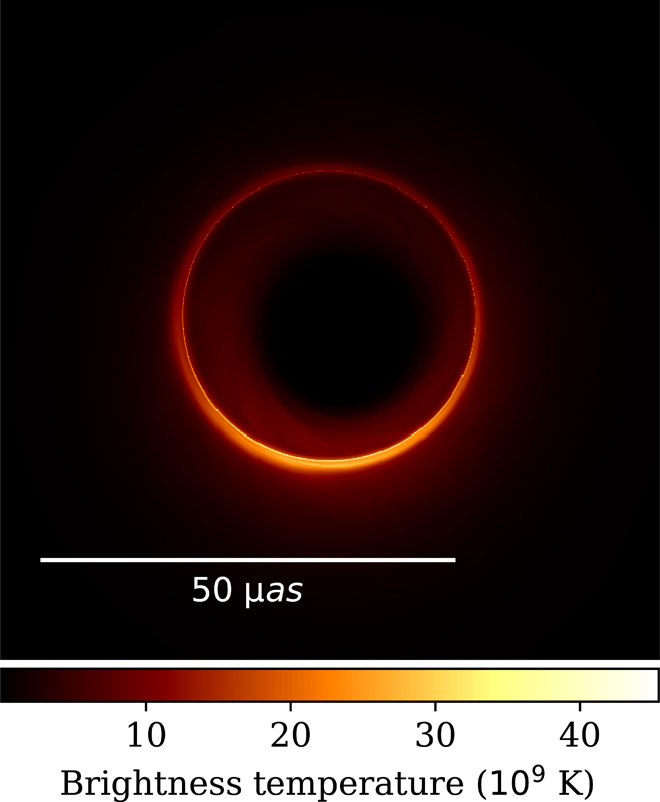
Source: Michael Johnson, et al., 18 March 2020
The abstract and part of the summary of the paper are reproduced below.
- Abstract: “The Event Horizon Telescope image of the supermassive black hole in the galaxy M87 is dominated by a bright, unresolved ring. General relativity predicts that embedded within this image lies a thin “photon ring,” which is composed of an infinite sequence of self-similar subrings that are indexed by the number of photon orbits around the black hole. The subrings approach the edge of the black hole “shadow,” becoming exponentially narrower but weaker with increasing orbit number, with seemingly negligible contributions from high-order subrings. Here, we show that these subrings produce strong and universal signatures on long interferometric baselines. These signatures offer the possibility of precise measurements of black hole mass and spin, as well as tests of general relativity, using only a sparse interferometric array.”
- Summary: “In summary, precise measurements of the size, shape, thickness, and angular profile of the nth photon subring of M87 and Sgr A* may be feasible for n = 1 (the first ring) using a high-frequency ground array or low Earth orbits, for n = 2 (the second ring) with a station on the Moon, and for n = 3 (the third ring) with a station in L2 (Lagrange Point).”
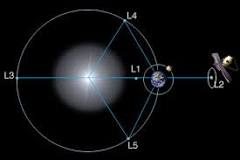
L2 is behind the Earth. Source: NASA
The complete, and quite technical, 18 March 2020 paper by Michael Johnson, et al., “Universal interferometric signatures of a black hole’s photon ring,” is available on the Science Advances website here: https://advances.sciencemag.org/content/6/12/eaaz1310
You’ll find a more narrative summary by Camille Carlisle, writing for SkyandTelescope.com, here: https://skyandtelescope.org/astronomy-news/scientists-predict-countless-rings-of-light-encircle-black-holes/
4. EHT images black hole-powered relativistic jets
On 7 April, 2020, the EHT Collaboration reported that it had produced images with the finest detail ever seen of relativistic jets produced by a supermassive black hole. The target of their observation was Quasar 3C 279, which contains a black hole about one billion times more massive than our Sun, and is about 5 billion light-years away from Earth in the constellation Virgo.
With a resolution of 20 μas (microarcseconds) for observations at a wavelength of 1.3 mm, the EHT imaging revealed that two relativistic jets existed. As shown in the following figure, lower resolution imaging by the Global 3mm VLBI Array (GMVA) and a VLBI array observing at 7 mm wavelength did not show two distinct jets.
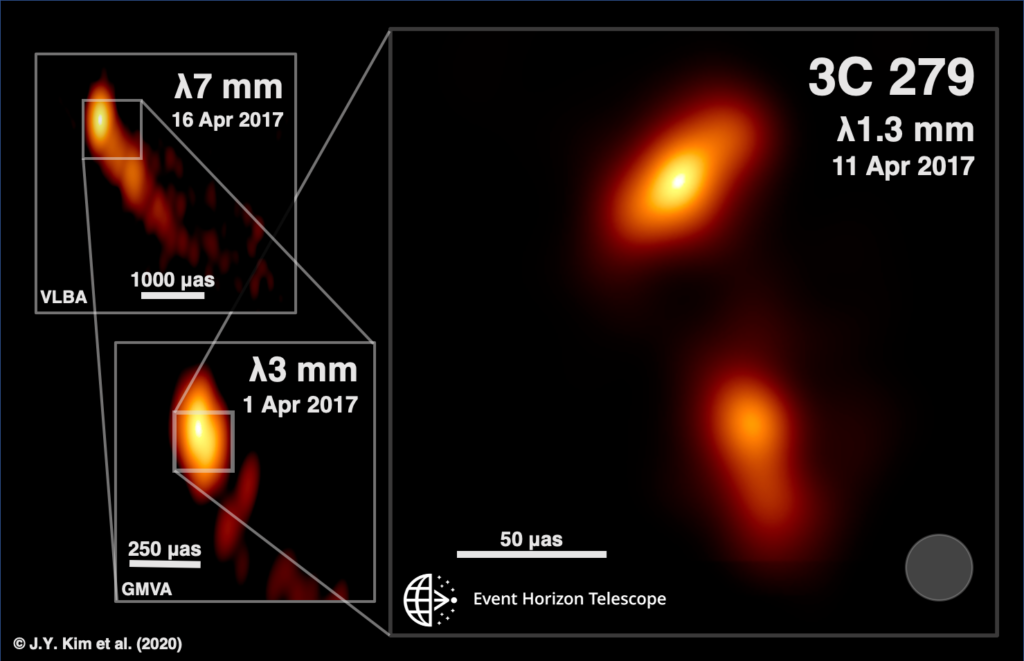
The observing dates, arrays, and wavelengths are noted at each panel. Source: J.Y. Kim (MPIfR), Boston University Blazar Program (VLBA and GMVA), and Event Horizon Telescope Collaboration
In their 7 April 2020 press release, the EHT Collaboration reported: “For 3C 279, the EHT can measure features finer than a light-year across, allowing astronomers to follow the jet down to the accretion disk and to see the jet and disk in action. The newly analyzed data show that the normally straight jet has an unexpected twisted shape at its base and revealing features perpendicular to the jet that could be interpreted as the poles of the accretion disk where the jets are ejected. The fine details in the images change over consecutive days, possibly due to rotation of the accretion disk, and shredding and infall of material, phenomena expected from numerical simulations but never before observed.”
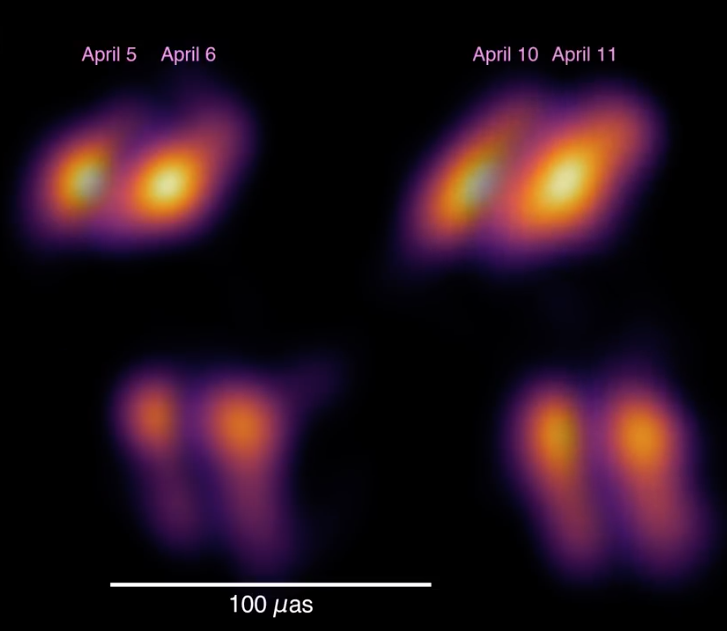
Quasar 3C 279. Source: Screenshot from
Event Horizon Telescope Collaboration video
The following short video (1:14 minutes) from the EHT Collaboration shows the 3C 279 quasar jets and their motion over the course of one week, from 5 April to 11 April 2017, as observed by the EHT.
5. Adding space-based EHT observatories
Imaging the M87 photon ring will be a challenging goal for future observations with an upgraded EHT. As indicated in the paper by Michael Johnson, et al., an upgraded terrestrial EHT array may be able to “see” the first photon sub-ring. However, space-based telescopes will be needed to significantly extend the maximum 12,742 km (7,918 miles) baseline of the terrestrial EHT array and provide a capability to image the photon ring in greater detail.
Here’s how the EHT terrestrial baseline would change with space-based observatories:
- Low Earth orbit (LEO): Add 370 – 460 km (230 – 286 miles) for a single telescope in an orbit similar to the International Space Station
- Geosynchronous orbit: Add 35,786 km (22,236 mi) for a single telescope, or up to twice that for multiple telescopes
- Moon: Add Earth-Moon average distance: 384,472 km (238,900 miles)
- L2 Lagrange point: Add about 1.5 million km (932,057 miles)
It seems to me that several EHT observatories in geosynchronous orbits could be a good solution that could be implemented sooner than an observatory on the Moon or at L2. Geosynchronous telescopes would greatly expand the EHT baseline and the spacecraft could make long observing runs from orbital positions that are relatively fixed in relation to the terrestrial EHT sites. In-orbit servicing would be more practical in geosynchronous orbit than at L2. In February 2020, Northrop-Grumman demonstrated the ability to remotely restore a large communications satellite that was running out of fuel in geosynchronous orbit. With remote servicing, a geosynchronous observatory could have a long operating life.
6. In conclusion:
With the ongoing improvements to the terrestrial EHT array and its data recording and processing systems, we should see many more black hole observations reported in the years ahead. I’m looking forward to direct observation of M87’s photon ring and the first look at the Sagittarius A* black hole near the center of our Milky Way galaxy. The time delay between data acquisition (i.e., from a series of observation runs of a particular target) and reporting is about three years. This is understandable given the mass of data that must be aggregated from the many EHT observatories to synthesize images of a target black hole. Hopefully, this time delay can be shortened in the years ahead.
Within the next decade, a plan to expand the EHT array to include orbital and/or lunar observatories could be in developed. Hopefully, funding for spacecraft development and deployment will follow.
7. For more information:
See the following sources for more information on the EHT and imaging a black hole:
- “The Event Horizon Telescope Team has Produced the First Image Showing the Shadow of a Black Hole,” The Lyncean Group of San Diego, 10 April 2019: https://lynceans.org/all-posts/the-event-horizon-telescope-team-has-produced-the-first-image-showing-the-shadow-of-a-black-hole/
- “Telescopes in space for even sharper images of black holes,” Radboud University, 6 May 2019: https://www.ru.nl/english/news-agenda/news/vm/imapp/2019/telescopes-space-even-sharper-images-black-holes/
- Emily Conover, “New telescopes could help spot ‘photon ring’ of the first black hole ever imaged,” ScienceNews.org, 18 March 2020: https://www.sciencenews.org/article/new-telescopes-could-help-spot-photon-ring-black-hole-ever-imaged
- Camille Carlisle, “Detailed calculations reveal a surprise about how black holes bend light around themselves, opening a new possibility for future observations,” SkyandTelescope.org, 18 March 2020: https://skyandtelescope.org/astronomy-news/scientists-predict-countless-rings-of-light-encircle-black-holes/
- “Something is Lurking in the Heart of Quasar 3C 279 – First Event Horizon Telescope Images of a Black-Hole Powered Jet,” Event Horizon Telescope Collaboration, 7 April 2020: https://eventhorizontelescope.org/blog/something-is-lurking-in-the-heart-of-quasar-3c-279
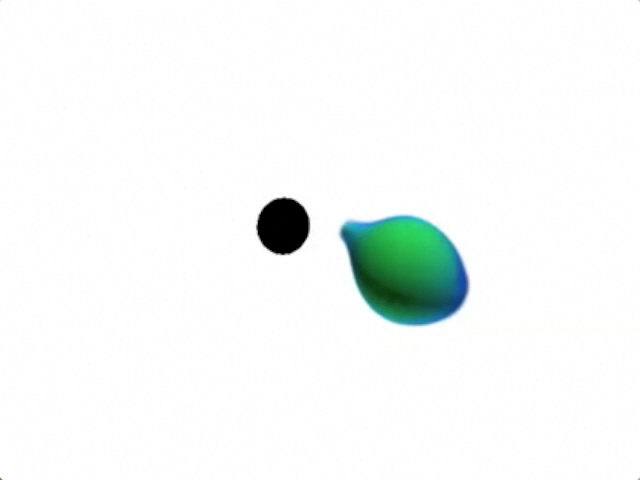
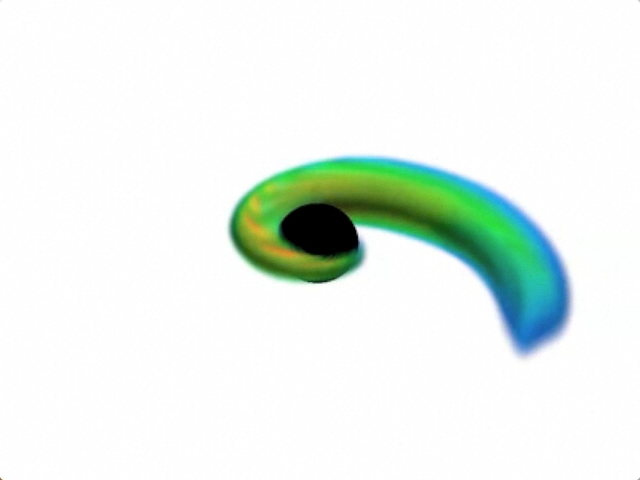
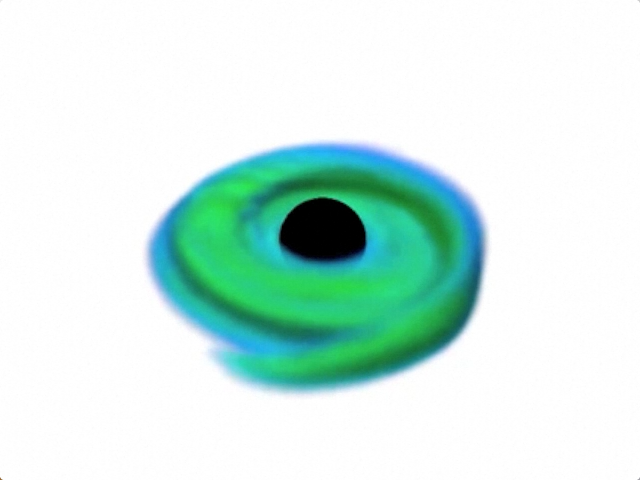

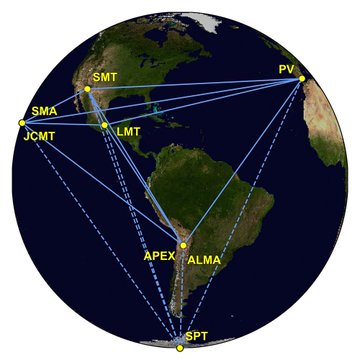
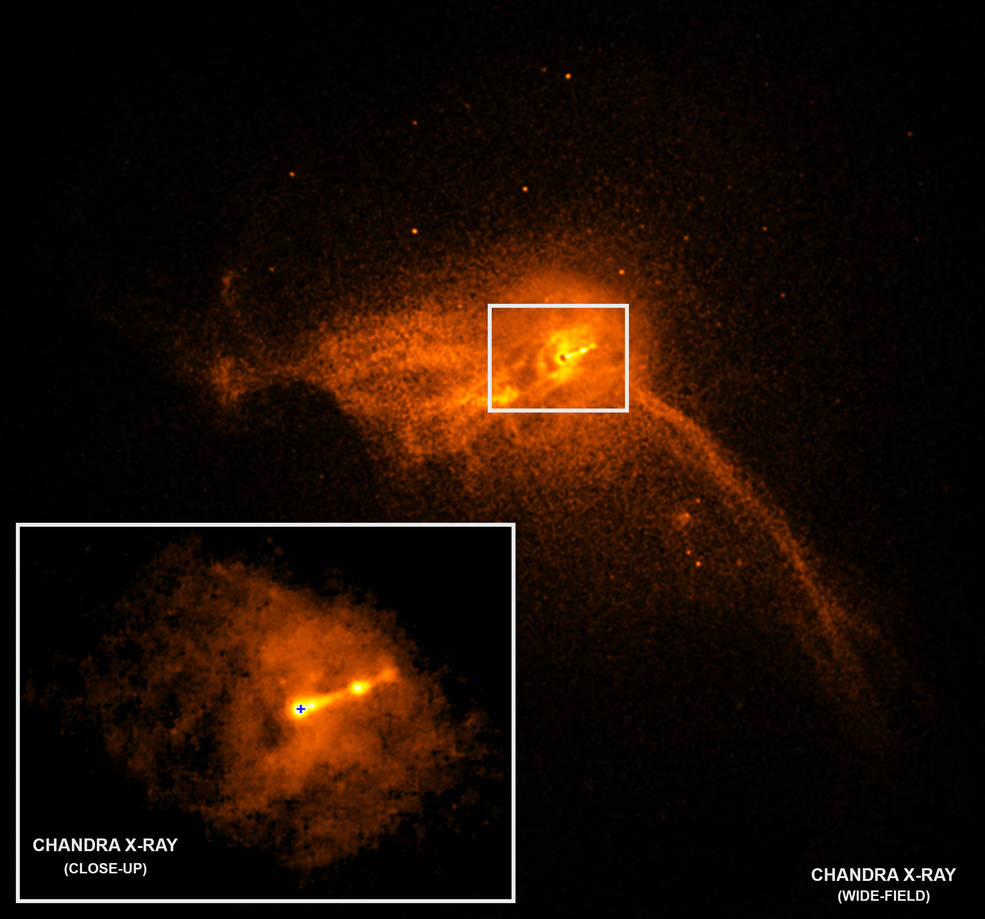
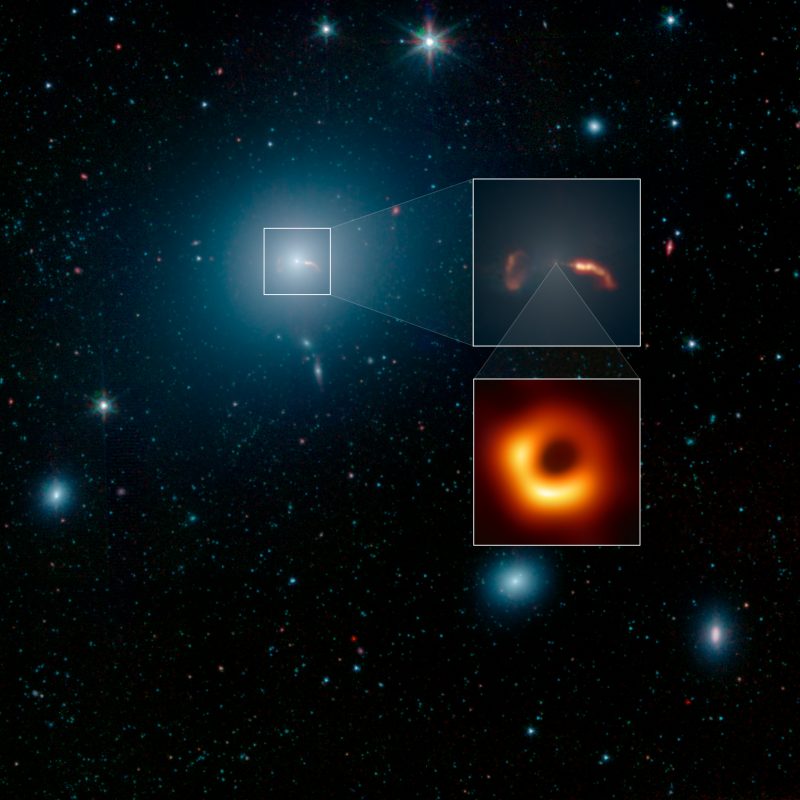
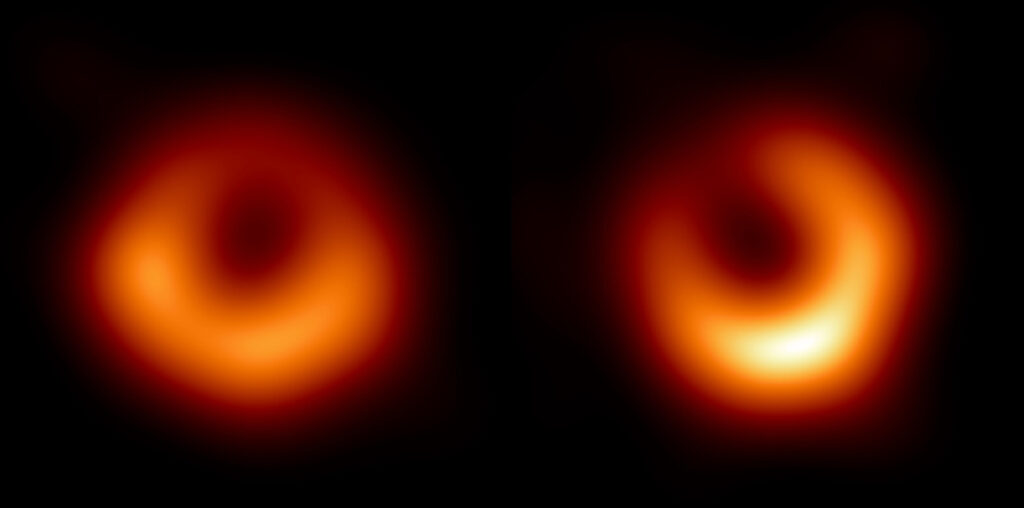
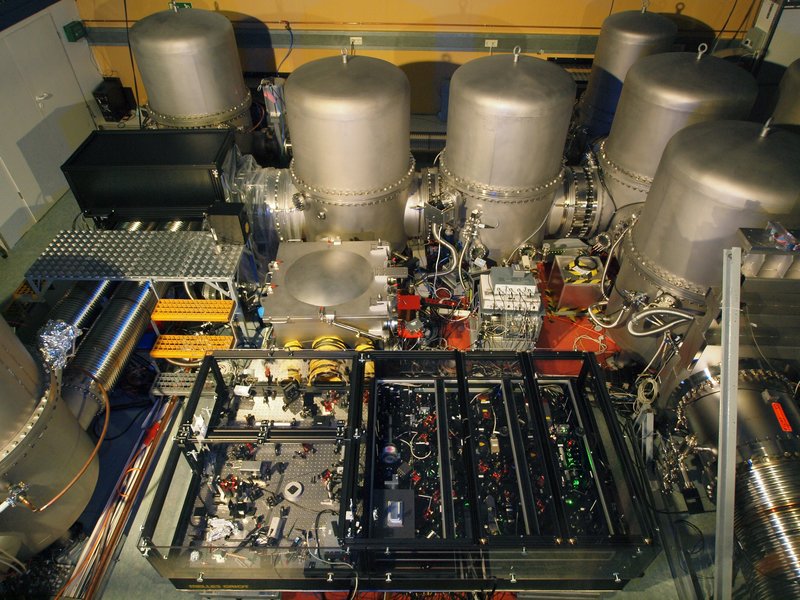
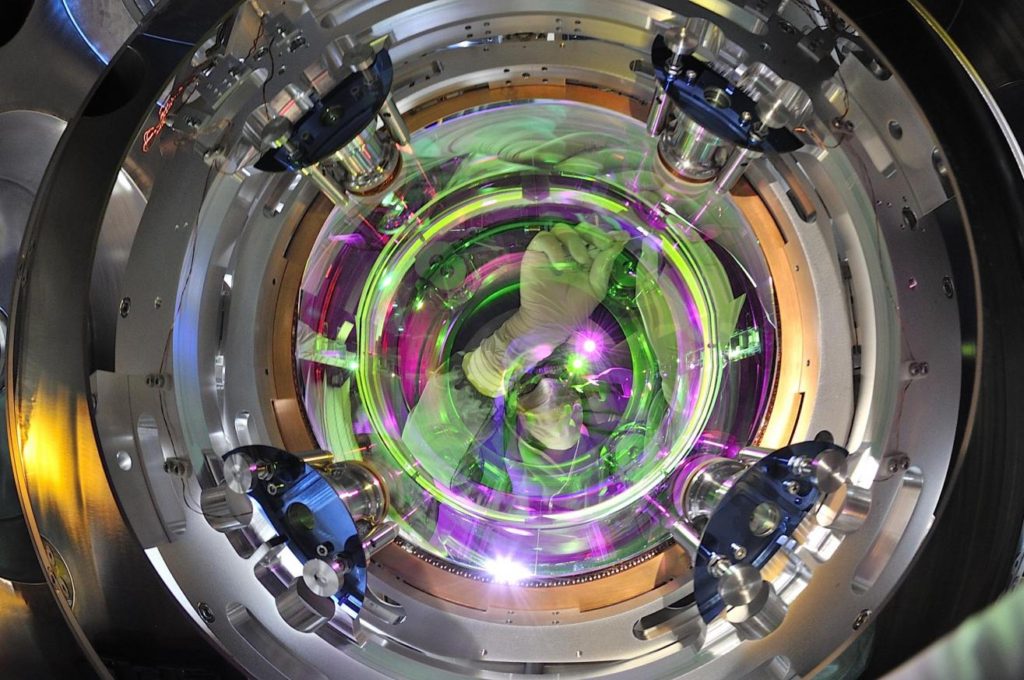
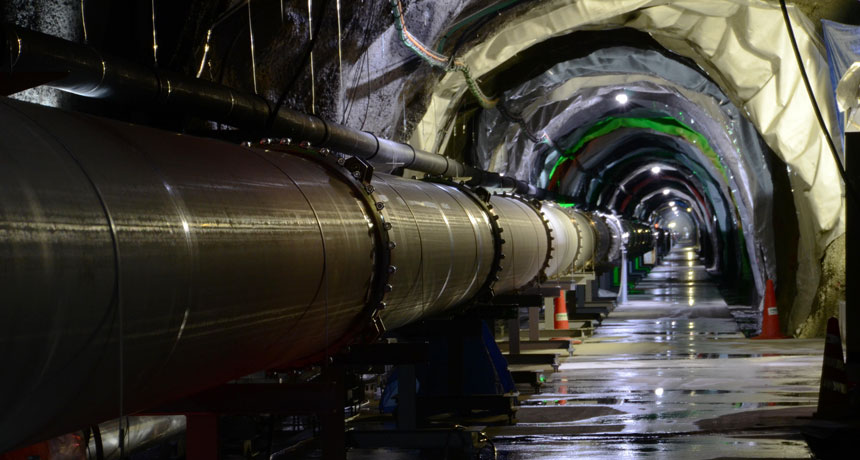
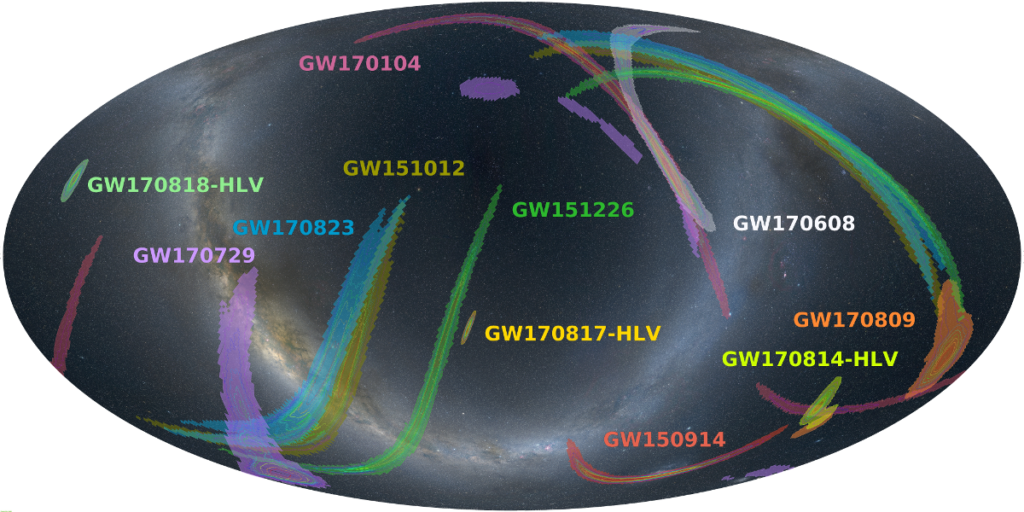
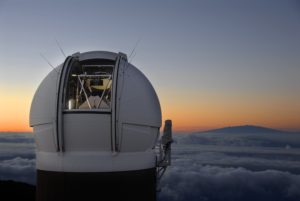 Pan-STARRS1 on Haleakala, Hawaii. Source: https://panstarrs.stsci.edu
Pan-STARRS1 on Haleakala, Hawaii. Source: https://panstarrs.stsci.edu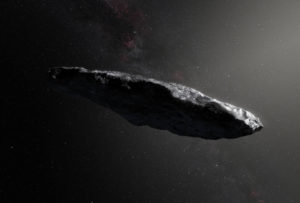 Artist’s concept of Oumuamua. Source: European Southern Observatory/M. Kornmesser
Artist’s concept of Oumuamua. Source: European Southern Observatory/M. Kornmesser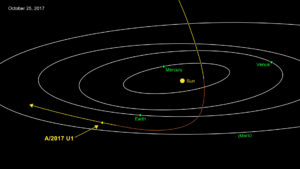 Oumuamua’s trajectory through our solar system. Source: NASA/JPL-Caltech
Oumuamua’s trajectory through our solar system. Source: NASA/JPL-Caltech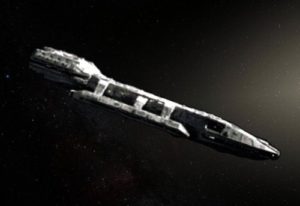 Source: https://abagond.wordpress.com/2017/11/25/oumuamua/
Source: https://abagond.wordpress.com/2017/11/25/oumuamua/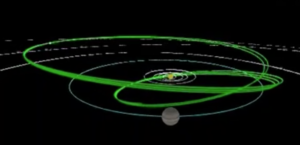 Source: Screenshot from animation of 2015 BZ509 orbit created by the Large Binocular Telescope Observatory
Source: Screenshot from animation of 2015 BZ509 orbit created by the Large Binocular Telescope Observatory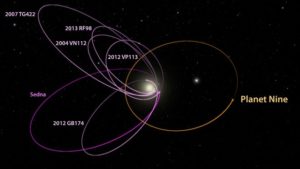 The potential orbit of Planet 9, illustrated with the existing orbit of several trans-Neptunian objects (TNOs).Source: R. Hurt/JPL-Caltech
The potential orbit of Planet 9, illustrated with the existing orbit of several trans-Neptunian objects (TNOs).Source: R. Hurt/JPL-Caltech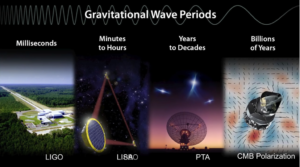 Source: screenshot from Kip Thorne / Walter Issacson interview at:
Source: screenshot from Kip Thorne / Walter Issacson interview at: 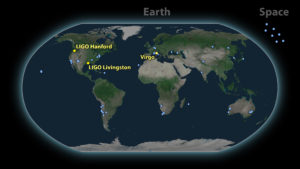 Source: LIGO – VIRGO,
Source: LIGO – VIRGO, 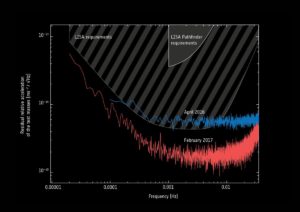 Source: ESA, https://www.elisascience.org/
Source: ESA, https://www.elisascience.org/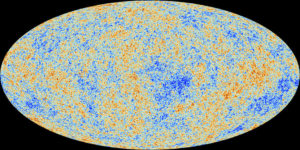 Planck all-sky survey. Source; ESA / Planck Collaboration
Planck all-sky survey. Source; ESA / Planck Collaboration